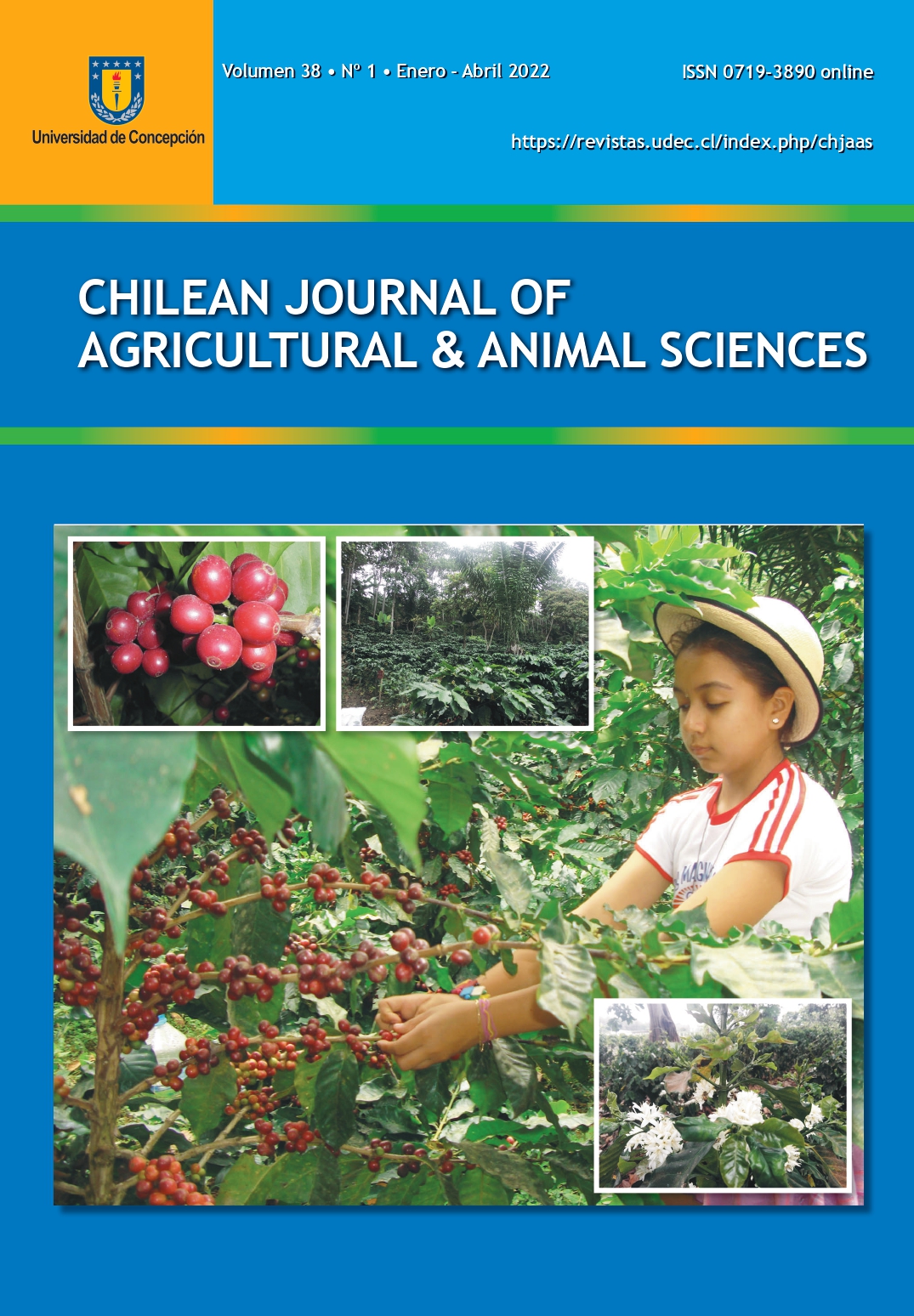SUSTAINABILITY AND PRODUCTIVITY OF DIFFERENT CROP SEQUENCES UNDER TWO TECHNOLOGICAL MANAGEMENT PRACTICES IN THE PAMPEAN REGION OF ARGENTINA
DOI:
https://doi.org/10.29393/CHJAAS38-3SPSA60003Abstract
According to FAO estimates, global food production needs to increase by 60 % to feed the world’s population in 2050. This increasing demand for food has led to agricultural intensification, which has strongly affected the structure and function of agroecosystems. The objective of this study was to evaluate productivity and sustainability of different crop sequences based on different indicators under two technological management practices (medium and high levels) in the Pampean Region, Argentina. The following indicators were evaluated: balances of nitrogen (N), phosphorous (P), carbon (C), and water use efficiency (WUE). Canola/ soybean (late-sown)– orn–sorghum–wheat was the sequence with the highest mean values of productivity (7,270 kg ha-1), C balance (923 kg ha-1), and water use efficiency (9.60 kg ha-1 mm-1). However, it recorded the lowest negative balances of N (-138 kg ha-1) and P (-20 kg ha-1) compared to the other sequences. O/S-C-Su-W had the lowest nutrient extractions, and thus the least negative nutrient balances of N (-81.75 kg ha-1) and P (-8.67 kg ha-1), also recording the lowest productivity (5,687 kg ha-1) and WUE (7.99 kg ha-1 mm-1). B/S-C-S-W and W/S-C-S-W had high productivity and contributed C to the soil, but they also caused high nutrient extraction. High technological level resulted in higher levels of productivity (6,664 kg ha-1), balance of C (602 kg ha-1), N (-97,5 kg ha-1) and P (13.7 kg ha-1), as well as increased water use efficiency (8.95 kg ha-1 mm-1) compared to the medium technological level. The increasing demand for food and the search for resilient agricultural practices that combine productive and ecological aspects highlight the importance of diversified production based on indicators, allowing for sustainable food production systems.
Downloads
Published
How to Cite
Issue
Section
Copyright (c) 2022 Universidad de Concepción

This work is licensed under a Creative Commons Attribution 4.0 International License.







